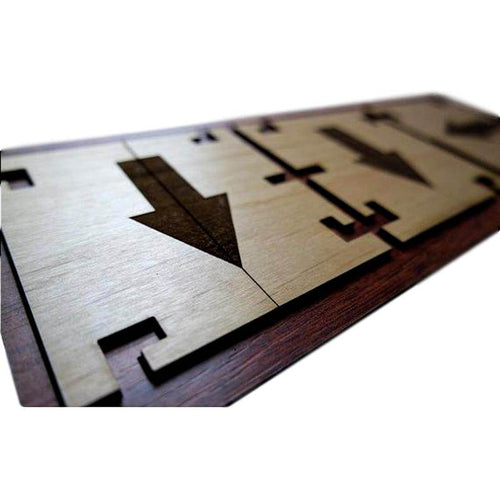Tips and Tricks for Designing Your Escape Room
Escape rooms have taken the world by storm, offering participants an immersive and thrilling adventure that challenges their wits and teamwork. At the heart of every successful escape room lies a meticulously designed set of props that transport players into a different world. In this blog post, we will delve into the design principles that elevate escape room props, turning them into captivating and integral elements of the overall experience. We'll explore the role of color theory, spatial arrangement, lighting, and more in creating props that enhance the escape room adventure.
Color Theory: Setting the Mood
Color is a powerful tool in design, evoking emotions, setting moods, and influencing perceptions. In escape room props, color choices can significantly impact the players' experience. Consider the following aspects of color theory:
-
Theme Consistency: Choose colors that align with the overall theme of your escape room. For instance, warm, rustic tones can evoke a sense of adventure in a pirate-themed room, while cool blues might enhance the mystery of a science laboratory.
-
Contrast and Visibility: Use contrasting colors to highlight important elements of a prop, such as buttons or hidden compartments. This aids players in identifying interactive components quickly.
-
Emotional Impact: Certain colors evoke specific emotions. Red can create a sense of urgency, while green is associated with tranquility. Utilize these psychological associations to enhance players' emotional engagement.
Spatial Arrangement: Guiding Exploration
Effective spatial arrangement of props and elements within an escape room is crucial for guiding players through the experience. Here's how to optimize spatial arrangement:
-
Flow and Pathways: Design the layout to create a logical flow, guiding players from one puzzle to another. Incorporate clues and props that subtly lead participants in the right direction.
-
Focal Points: Create focal points by placing key props or puzzles in prominent locations. Draw players' attention to important elements through strategic placement and lighting.
-
Group Interaction: Encourage teamwork by arranging props in ways that require collaborative effort to solve. This fosters communication and enhances the social aspect of the escape room.
Lighting: Setting the Atmosphere
Lighting can transform a mundane space into an enchanting realm. Proper lighting enhances the mood, draws attention to details, and heightens the immersive experience. Consider these lighting techniques:
-
Dimming and Spotlighting: Use dimmable lights and spotlights to control the focus and intensity of illumination. Highlight critical props while creating areas of mystery and intrigue.
-
Color Temperature: Experiment with different color temperatures to evoke specific emotions. Cool white light might enhance a futuristic setting, while warm light adds coziness to a medieval-themed room.
-
Dynamic Lighting: Incorporate dynamic lighting effects that change over time or in response to player actions. This can create dramatic moments and enhance the interactive nature of the escape room.
Texture and Material Selection: Enhancing Realism
The tactile experience of props contributes significantly to the players' immersion. Incorporate different textures and materials to create a multisensory adventure:
-
Authenticity: Choose materials that align with the theme and time period of your escape room. Realistic textures enhance the illusion and make the props feel genuine.
-
Tactile Puzzles: Integrate puzzles that require players to manipulate textures or materials in unique ways. This engages the sense of touch and adds a layer of complexity to the experience.
Sound Design: Amplifying Suspense
Sound plays a subtle yet powerful role in building suspense, enhancing immersion, and signaling progression. Thoughtful sound design can elevate the escape room atmosphere:
-
Ambient Sounds: Use background sounds that align with the setting, such as creaking doors, distant footsteps, or mysterious whispers. This creates an eerie and captivating environment.
-
Audio Clues: Integrate audio clues that provide hints or feedback when players interact with props. Sound cues add an additional layer of engagement and challenge.
Designing escape room props goes beyond mere decoration – it involves a careful orchestration of elements that contribute to the overall adventure. By understanding and applying design principles such as color theory, spatial arrangement, lighting, texture, and sound, prop makers can create immersive and unforgettable experiences for players. The art of prop design lies in its ability to transform a physical space into a captivating narrative, making escape rooms more than just games; they become journeys into imaginative worlds.


0 comments